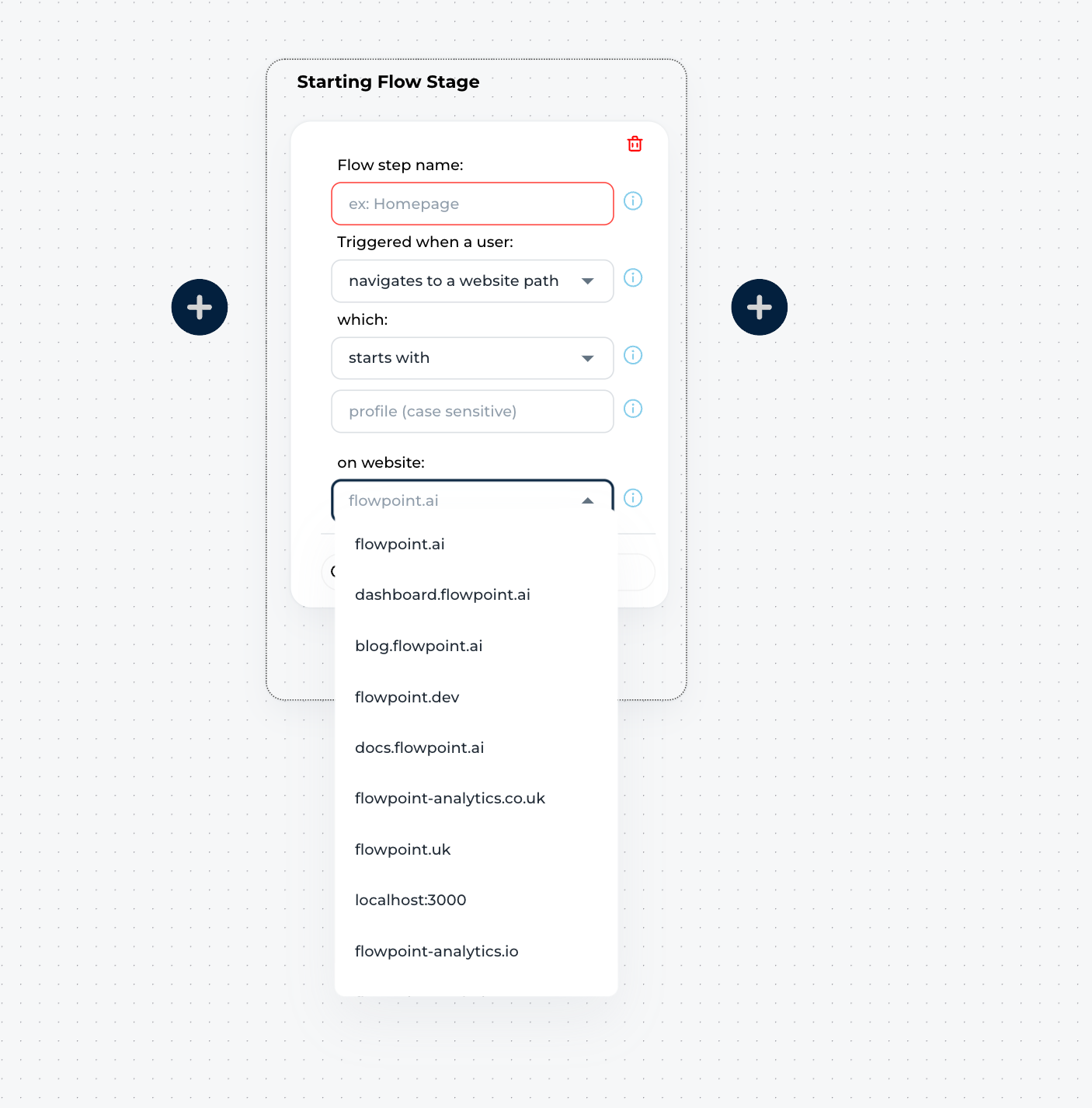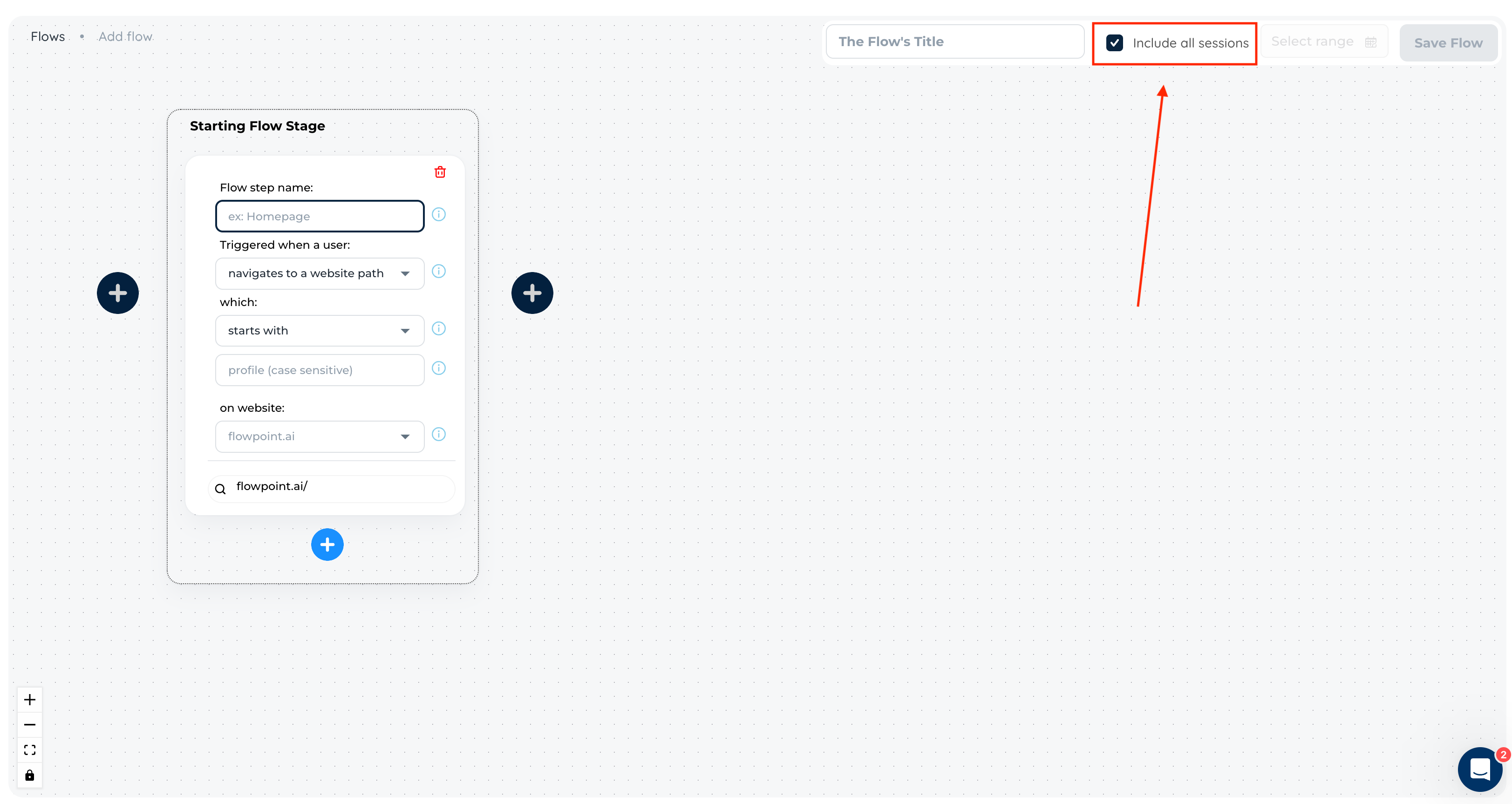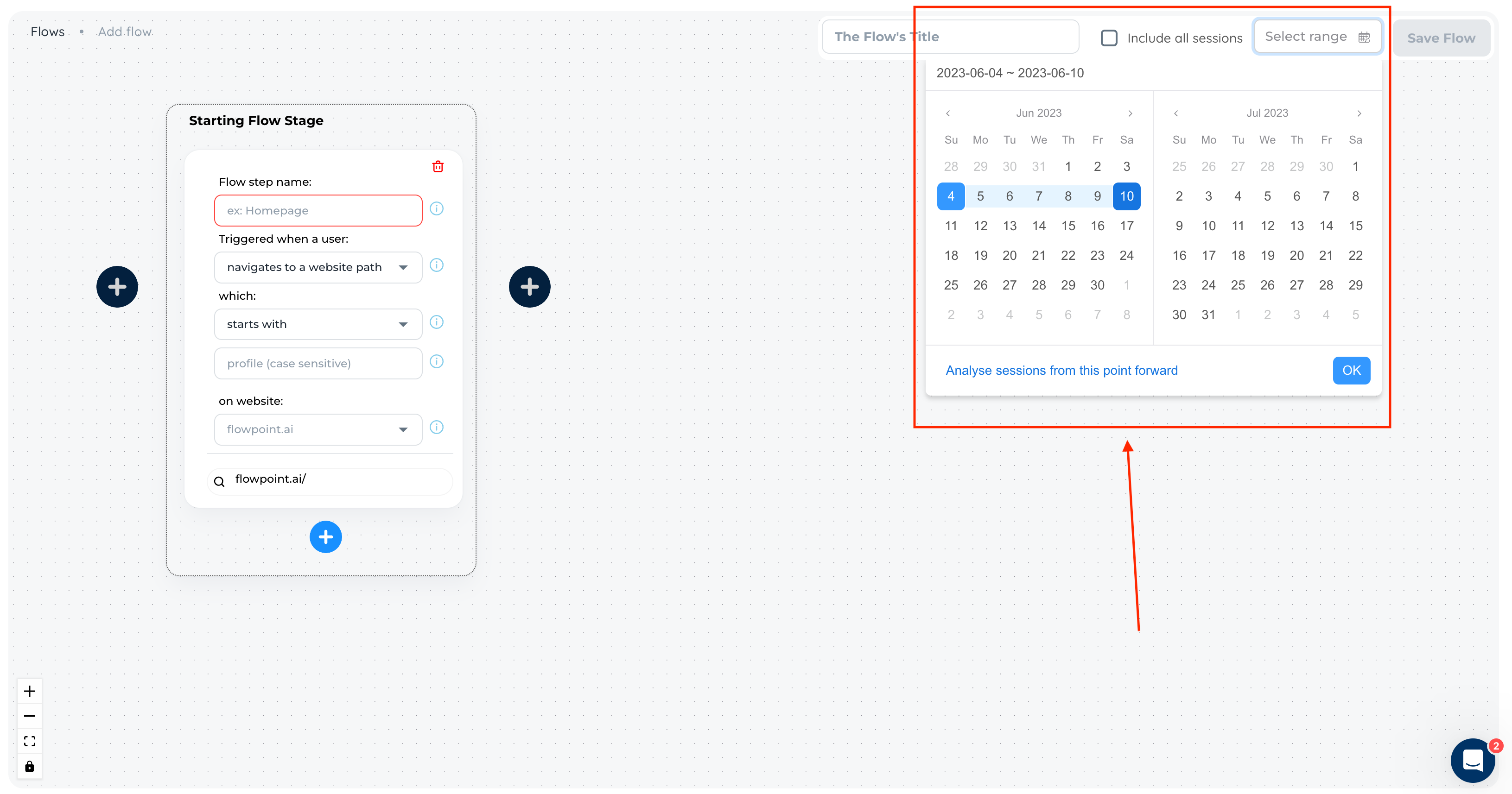How to Add A Flow
User Flows
We define a flow point as an important, granular step a user must complete in a specific order for finishing a desired flow. Flowpoint matches user sessions to flows to build funnel analysis.
For example, when we monitor a registration flow, the key flow points we are looking for are:
- Mouse clicking on a "Create Account" button
- Visiting the website's registration URL (www.example.com/register (opens in a new tab))
- Mouse clicking on a "Complete Registration" button
Each website has its own user flows which must be monitored. During your onboarding process, Flowpoint can automatically analyse your website and provide some of the most common user flows.
You are still able to add or customize your flows through the dashboard.
When adding or updating a user flow, Flowpoint will also reanalyse all your past users' sessions, so you can build and visualise any flow analysis without ever losing anything.
Adding your own flow
Step 1: Understanding your website's goals
The most useful user flows are the ones that are reflecting a user journey that brings a certain outcome to your business.
Ex: In the case of an e-commerce shop, the most common user journey would be the purchasing flow, the goal that we are interested in being to track the conversion rate on the checkout button.
Step 2: Translating your goals into flowpoints
To achieve the goal described at Step 1, a user will usually have to go through a set of steps on your website. This set of steps will bring your user from an initial touch point (ex: landing on the product page) to the actual action of purchasing the product (ex: clicking on the checkout button)
We call flowpoints all these touch points that a user has to follow. Defining them is crucial to be able to create a complete flow and analyse conversions.
Step 3: Creating your first flow
Creating a flow is easy.
Going to the https://dashboard.flowpoint.ai/funnels/flows/add (opens in a new tab) will open the dashboard on the flow creation page.
Here you can define the flowpoints (touch points) that we talked about at Step 2.
Step 4: Creating your flowpoints
Defining a flowpoint requires you to set up multiple values:
- Flowpoint title – this can be any title you want if it helps you remember and identify the right touch point on the screen.
- Flowpoint type –
- navigating to a URL:
- starts with – a touch point being loading a particular URL from your website that starts with the given key phrase
- contains – a touch point being loading a particular URL from your website that contains the given key phrase. For more accurate results, if the key phrase is either at the beginning or at the end, please use the "starts with" or "ends with" values.
- ends with – a touch point being loading a particular URL from your website that ends with the given key phrase
- is – a touch point being loading a particular URL from your website which exactly matches the given key phrase. This matching rule will provide the most accurate results; however, please only use it if you are 100% sure that the key phrases are a perfect match.
- is homepage - if the URL is just the homepage of the website
- is anypage - when you need an intermediary flowpoint that could be anything on a user journey
- is regular expression - here you might need a regex string to configure a dynamic URL pathname. You can generate one from a regex generator website or reach out to us, and we will generate a regex string for you
- clicking on an element (formerly "clicking on a button"):
- starts with – a button or URL which has text that starts with the given key phrase
- ends with – a button or URL which has text that ends with the given key phrase
- contains – a button or URL which contains the given key phrase. For more accurate results, if the key phrase is either at the beginning or at the end, please use the starts with or ends with values
- is – a button or URL has text which exactly matches the given key phrase. This matchmaking rule will provide the most accurate results; however, please only use it if you are 100% sure that the key phrases are a perfect match.
- is media with currentSrc
- is a href
- is a href that starts with
- is a href that contains
- is a href that ends with
- navigating to a URL:
The key phrase can be a fraction of a path from a URL, an entire path from a URL, or the text on a particular button that we want to track.
Ex: The example below shows a flowpoint defined for reaching the profile page.
Considering that the flowpoint is set as "starts with", any page that begins with https://flowpoint.ai/profile (opens in a new tab) will be tracked, ex: https://flowpoint.ai/profile/vlad (opens in a new tab)
Similarly, a flowpoint defined by clicking on a button can be configured as the following:
Which means that any button containing the word "purchase" will be considered.
Anything like "Purchase product" or "Purchase today" or "Best purchase" will be considered when configuring the flowpoint as in the example below:
Step 5: Defining Flowpoint variants
A Flowpoint variant is a flowpoint which can act as an alternative to a standard Flowpoint within a Flow.
Ex 1: In a particular step within a Flow a user could either click "Pay with card" or "Pay with Apple pay". In this situation we would like to track both buttons which are part of the same step of the user flow.
Ex 2: (below) A user going to the home page and then a the second step we are interesting in tracking him either on the /path1 or /path2
Step 6: Definining Multi-Domain flowpoints
In Flowpoint, a user flow can be defined across multiple websites that you own, for example: User visits your blog website, then comes to your website on a particular landing page and then goes to your sofware dashboard and registers. In this situation we track the activity of a particular visitor across all three domains: blog, website and dashboard.
In order to set multi-domain tracking, all you need to do is install the Flowpoint tracking code in all the websites that need tracking.
Flowpoint will then automatically detect incoming sessions from each domain and when you set up a flowpoint you will now be able to select the domain you want a particular action to happen from a simple dropdown.

Step 7. Saving your flow
When saving a flow, Flowpoint will beging analysing your data to populate the flow with traffic data from your users.
By default, Flowpoint will consider your entire acumulate data for the analysis, however you can specify if you only want to analyse from a particular timeframe.

